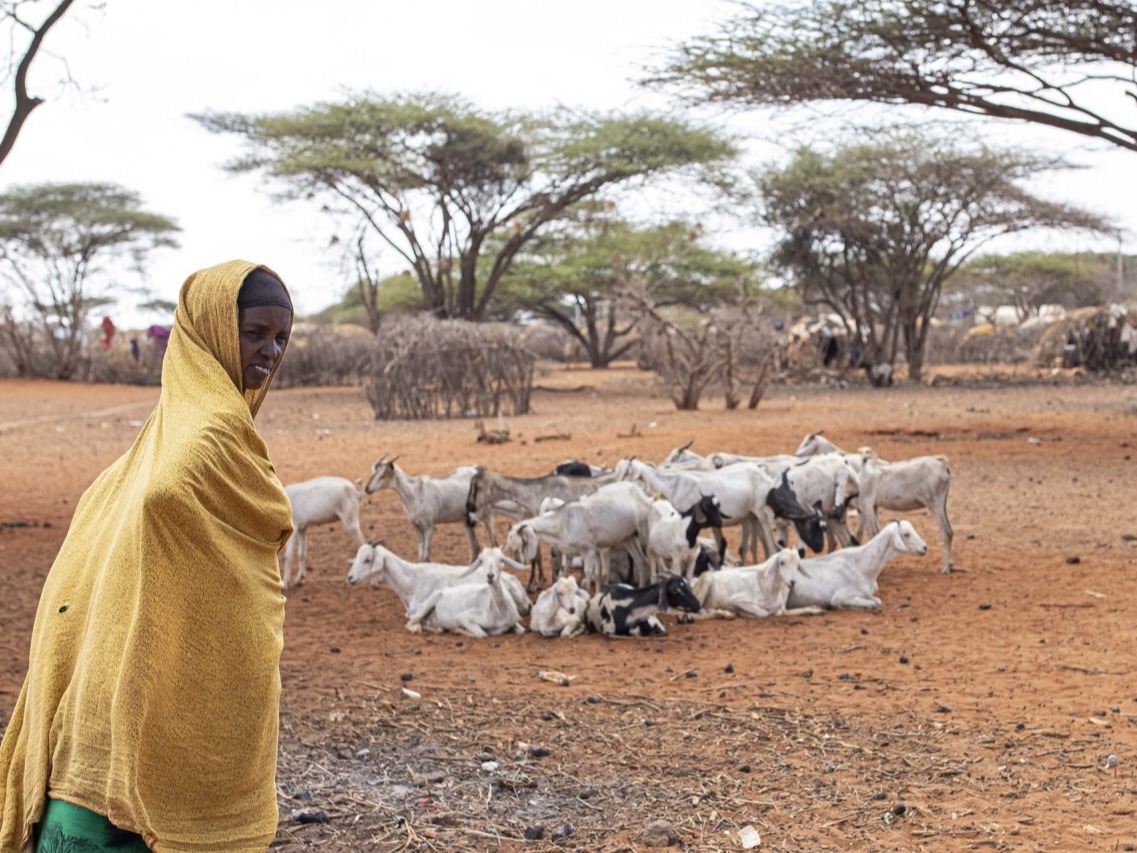Livestock for Health in Kenya
Contributing to the prevention of acute malnutrition among children in pastoral households through nutrition-sensitive livestock programming in Marsabit County
23/05/2023 ,

Saka Junction, Garissa, Kenya - A woman stands near her goats
©FAO/Patrick Meinhardt
A joint study conducted with UNICEF and funded by the U.S. Agency for International Development found that providing livestock feed along with nutrition counselling reduced child wasting by 26%. During the drought response, FAO provided water, health, and feed support to over 16 million animals, which ensured the production of 70 million litters of milk — this was enough for 2.7 million children to have access to a cup of milk every day. The intervention had the following impact: 1. Higher production (25% increase) of milk at household level in both dry and non-dry seasons resulting from the provision of livestock feed. This also led to a reduction in the price of milk in local markets. 2. An improvement in children's nutritional status. 3. An increase in dietary diversity. 4. A reduction in the loss of livestock.
Working towards SDGs:
![]()
![]()
![]()
![]()
![]()
